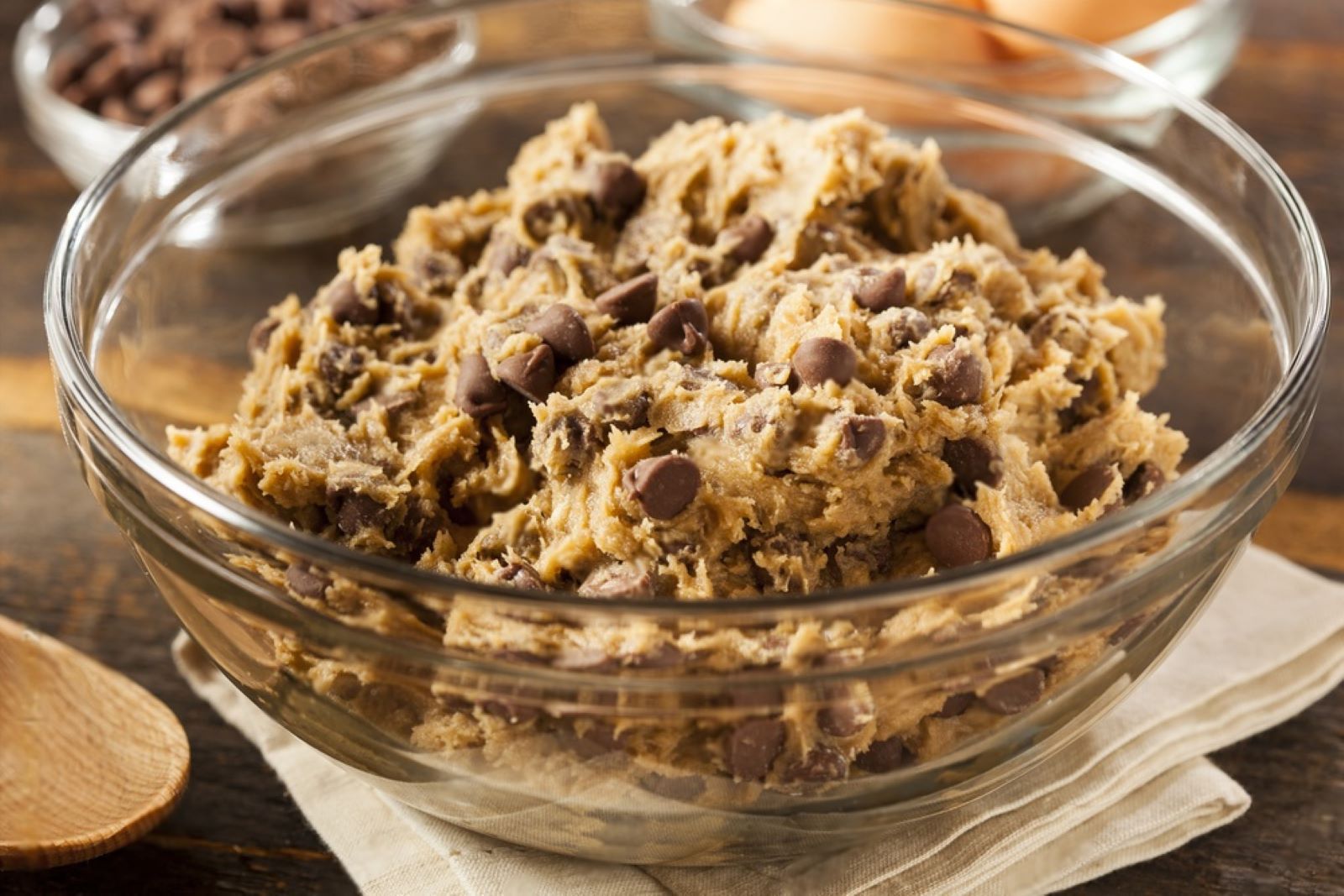
Cookie batter, the delightful mixture of butter, sugar, flour, and other delicious ingredients, is a tempting treat on its own and the foundation for an array of mouthwatering cookies. Whether you prefer chocolate chip, oatmeal raisin, or peanut butter cookies, the process of mixing and shaping the dough is an enjoyable experience that often ends with a batch of freshly baked treats. However, if you’re looking to have cookie dough readily available for spontaneous baking or want to portion it for later use, freezing is a fantastic option. Freezing cookie batter allows you to preserve its freshness and flavors, ensuring that you can whip up a batch of homemade cookies at a moment’s notice. In this guide, we will explore the best practices for freezing cookie batter, from proper portioning and packaging techniques to storage tips, so you can have a stash of ready-to-bake dough on hand for your sweet cravings. Join us as we uncover the secrets of freezing cookie batter and discover the convenience of having this delightful treat at your fingertips, ready to be transformed into warm and delicious cookies whenever your sweet tooth calls.
Here are the simple steps to freeze cookie batter:
Step 1: Prepare the Cookie Batter
When it comes to freezing cookie batter, the first step is to prepare the dough. Begin by gathering all the ingredients required for your chosen cookie recipe. Whether you’re following a classic chocolate chip cookie recipe, a peanut butter cookie recipe, or any other variation, ensure you have all the necessary ingredients on hand.
Next, carefully measure and combine the ingredients as specified in the recipe. This typically involves mixing dry ingredients like flour, baking powder, and salt in a separate bowl and combining wet ingredients like butter, sugar, eggs, and vanilla extract in another bowl.
To achieve a well-combined cookie dough, it’s important to mix the ingredients thoroughly. Use a whisk, spoon, or an electric mixer to blend the ingredients together until they form a homogeneous mixture. Make sure to scrape down the sides of the bowl to incorporate any dry pockets or lumps that may have formed.
The goal of this step is to ensure that all the ingredients are evenly distributed throughout the dough, resulting in cookies with consistent texture and flavor. Properly combining the ingredients also helps prevent any uneven baking or pockets of unmixed ingredients in the final baked cookies.
As you mix the dough, pay attention to the recipe instructions for any specific techniques or mixing times. Some recipes may require alternating the addition of dry and wet ingredients, while others may call for specific mixing methods, such as creaming butter and sugar together.
By carefully following the instructions in your chosen recipe and thoroughly mixing the ingredients. Taking the time to prepare the dough properly ensures that your cookies will turn out delicious and satisfying, whether you choose to freeze the dough for later use or bake them right away.
Step 2: Portion the Cookie
Once you have prepared the cookie dough, the next step is to portion it into individual servings. This step is particularly useful if you want the flexibility to bake smaller batches of cookies as needed or if you prefer to have pre-portioned dough for convenience.
To portion the cookie dough, you can use a cookie scoop or a spoon. A cookie scoop is a handy tool specifically designed to measure out uniform portions of dough. It ensures that each cookie will be approximately the same size, resulting in consistent baking times and a visually appealing batch of cookies. Cookie scoops are available in different sizes, allowing you to choose the desired diameter for your cookies.
If you don’t have a cookie scoop, a regular spoon works just fine. Use a tablespoon or teaspoon to scoop out portions of dough. While this method may not yield perfectly uniform cookies, it is still effective in dividing the dough into manageable portions for freezing or baking.
When portioning the dough, make sure to scoop out enough dough to form a well-rounded cookie. You can adjust the size of the portions based on your preference and the instructions in your recipe. Keep in mind that the size of the portion will affect the baking time and yield of the final cookies.
As you portion the dough, place each individual portion onto a baking sheet lined with parchment paper or a silicone mat. Leave some space between the portions to allow for spreading during baking. If you plan to freeze the portions, make sure they are not touching each other to prevent them from sticking together.
By dividing the cookie dough into individual portions, you create convenient servings that can be easily thawed and baked whenever you want freshly baked cookies. This step also helps with portion control and allows you to bake a smaller quantity of cookies at a time, which can be especially beneficial if you have limited baking resources or prefer to have cookies in moderation.
Step 3: Shape the Cookie Dough Portions
After you have portioned the cookie dough into individual servings, the next step is to shape each portion into the desired form for your cookies. This step allows you to create cookies with a consistent appearance and helps ensure even baking.
To shape the cookie dough portions, take one portion at a time and roll it between your palms to form a rounded ball. The size of the ball will depend on the desired size of your cookies and the instructions in your recipe. You can make them smaller for bite-sized cookies or larger for more substantial treats.
If you prefer a different shape for your cookies, such as flattened discs or squares, gently press down on the rounded ball of dough to achieve the desired shape. You can use the palm of your hand or the bottom of a glass to flatten the dough evenly.
As you shape the cookie dough portions, place them on a baking sheet lined with parchment paper or a silicone mat. The lining prevents the cookies from sticking to the baking sheet and makes it easier to remove them after baking.
Ensure that there is enough space between the cookie dough portions on the baking sheet. This spacing allows for proper air circulation and prevents the cookies from merging into each other while freezing or baking. Typically, a couple of inches of space between each portion is sufficient.
Keep in mind that the cookies may spread slightly during freezing or baking, so it’s important to provide ample space for expansion. If needed, you can use multiple baking sheets or freeze the cookies in batches to accommodate a larger quantity.
By shaping the cookie dough portions into rounded balls or the desired shape, you create uniform cookies with an appealing presentation. The placement of the shaped portions on the lined baking sheet ensures that the cookies maintain their individual form during freezing and baking.
Step 4: Chill the Cookie Dough
Once you have shaped the cookie dough portions into the desired form, the next step is to chill them in the refrigerator. This step is essential to firm up the dough, making it easier to handle and preventing excessive spreading during the freezing process.
To begin, place the baking sheet with the shaped cookie dough portions into the refrigerator. Make sure the baking sheet is flat and level to prevent any shifting or misshaping of the dough.
Allow the cookie dough portions to chill in the refrigerator for about 30 minutes to 1 hour. The exact chilling time may vary depending on factors such as the temperature of your refrigerator and the consistency of the dough. Chilling the dough helps solidify the fat (such as butter) in the dough, making it more rigid and less prone to spreading.
During the chilling process, the dough becomes firmer, which is especially important for cookies that contain a higher fat content. This firmness helps the cookies retain their shape and prevents them from spreading excessively during the freezing and baking stages.
Chilling the dough also allows the flavors to meld and develop, resulting in cookies with enhanced taste and texture. It can help deepen the flavors and improve the overall quality of the baked cookies.
By giving the shaped cookie dough portions sufficient time to chill in the refrigerator, you ensure that the dough is well-prepared for the subsequent steps of freezing or immediate baking. The firmness achieved through chilling helps maintain the desired shape of the cookies and contributes to the overall success of the final baked goods.
Step 5: Flash-Freeze the Cookie
After the cookie dough portions have chilled in the refrigerator, it’s time to flash-freeze them. Flash-freezing is a process that rapidly freezes the dough to preserve its quality and prevent the formation of ice crystals, which can affect the texture and taste of the final baked cookies.
To begin, remove the baking sheet with the chilled cookie dough portions from the refrigerator. Make sure the dough portions are firm to the touch, indicating that they have sufficiently chilled.
Transfer the baking sheet to the freezer. Place it on a flat surface to ensure that the cookie dough portions maintain their shape during freezing. It’s important to use the freezer instead of the refrigerator at this stage to achieve a quicker freeze.
Allow the cookie dough portions to freeze in the freezer for about 1 to 2 hours or until they become solid to the touch. The exact freezing time may vary depending on factors such as the size and thickness of the dough portions and the efficiency of your freezer. Freezing the dough until it is solid helps prevent the portions from sticking together and allows for easy handling and storage.
Flash-freezing the cookie dough at a relatively low temperature and for a shorter period helps maintain the integrity of the dough. By freezing it quickly, the water molecules in the dough freeze rapidly, minimizing the formation of large ice crystals that can negatively impact the texture and taste of the cookies.
Once the cookie dough portions are frozen solid, they can be transferred to freezer-safe containers or resealable freezer bags for long-term storage. Flash-freezing ensures that the portions remain separate and don’t stick together, making it easier to retrieve and use individual portions when needed.
By flash-freezing the cookie dough, you preserve the quality of the dough and set the stage for future baking. When you’re ready to bake the cookies, you can simply remove the desired number of frozen dough portions from the freezer and proceed with the baking instructions in your recipe.
Step 6: Package the Frozen Cookie Dough
Once the cookie dough portions have been flash-frozen and are solid, it’s time to package them for long-term storage in the freezer. Proper packaging is crucial to maintain the quality and prevent freezer burn, ensuring that your cookie dough remains fresh and ready to use whenever you want to bake.
Start by taking out the frozen cookie dough portions from the freezer. Carefully handle them to prevent any thawing or premature melting. It’s best to work quickly to minimize the time the dough spends at room temperature.
Next, transfer the frozen dough portions into airtight freezer-safe containers or resealable freezer bags. These containers should be specifically designed for freezer use to provide optimal protection against moisture loss and freezer burn.
If you prefer to use containers, select ones that are appropriately sized to accommodate the portions of cookie dough. Place the dough portions in a single layer inside the containers, leaving some space at the top to allow for expansion during freezing. You can separate each layer of dough with parchment paper or plastic wrap to prevent sticking.
Alternatively, if you choose to use resealable freezer bags, make sure they are of high quality and have a reliable seal. Place the cookie dough portions inside the bags, and gently press out any excess air before sealing them. Removing the air helps minimize the risk of freezer burn, which can affect the quality and taste of the dough.
Once the frozen cookie dough portions are properly packaged and labeled, it’s time to return them to the freezer. Place the containers or bags in a flat position to prevent the dough from getting squished or misshapen. This arrangement also helps optimize freezer space and organization.
By taking the extra step to package the frozen cookie dough portions in airtight containers or bags, you protect the dough from moisture loss, freezer burn, and odors from other freezer items. Proper packaging ensures that your cookie dough remains in excellent condition until you’re ready to bake fresh, homemade cookies.
Step 7: Label and Date
After packaging the frozen cookie dough portions, it is essential to label and date each container or bag. This simple step is crucial for easy identification, organization, and proper rotation of the dough portions, ensuring that you use the oldest dough first.
Using a marker or labels, clearly write the name of the cookie dough on each package. This allows you to quickly identify the type of dough without having to open every container or bag. For example, if you have multiple flavors or variations of cookie dough, such as chocolate chip, oatmeal raisin, or peanut butter, labeling them accordingly will make it easier to select the desired dough.
Additionally, it is important to write the date of freezing on each package. This helps you keep track of the storage duration and prioritize the use of the oldest dough first. Over time, frozen cookie dough can lose its quality and freshness, so it’s helpful to know how long it has been stored. By following the first-in, first-out principle, you can ensure that you use the dough within a reasonable time frame for the best results.
Make sure the labeling is clear and legible. Writing directly on the containers or bags is sufficient, but if you prefer, you can also use adhesive labels or tape with the relevant information. Place the label or write the information in a visible and easily readable location on each package.
By taking the time to label and date the packages, you create an organized system that makes it convenient to identify and select the desired cookie dough. This step eliminates the need for guesswork or opening multiple containers to find the dough you want. Proper labeling also helps you maintain optimal freshness and quality by ensuring that you use the oldest dough first, preventing any dough from being forgotten or left unused for too long.
Step 8: Store in the Freezer
After you have labeled and dated the packages of frozen cookie dough, it’s time to store them in the freezer. Proper storage is crucial to maintain the quality, texture, and taste of the dough for an extended period.
Begin by ensuring that your freezer is set to the appropriate temperature for optimal food preservation. The ideal freezer temperature is typically around 0°F (-18°C). Maintaining a consistent and sufficiently cold temperature helps prevent the growth of bacteria and preserves the quality of the cookie dough.
Place the labeled cookie dough packages in the freezer. It is important to arrange them in a flat position. This arrangement helps maximize the use of freezer space, allowing you to store more packages efficiently. Placing the packages flat also prevents the dough from getting squished or misshapen, ensuring that the cookies will maintain their desired shape when baked.
If you have multiple packages of cookie dough, you can stack them on top of each other in a well-organized manner. However, avoid overpacking or piling too many packages on top of each other, as this may lead to deformation or damage to the dough.
Additionally, ensure that the packages are placed away from the freezer vents or areas with temperature fluctuations. These areas can lead to uneven freezing and potential degradation of the dough quality.
Properly storing the labeled cookie dough packages in a flat position helps preserve the integrity of the dough while maximizing the use of freezer space. By maintaining the dough’s shape and preventing any damage or distortion, you can ensure that your cookies will turn out as intended when you decide to bake them.
By following these storage guidelines, you can confidently store the frozen cookie dough in your freezer, knowing that it will be readily available whenever you’re ready to enjoy freshly baked cookies.
How long can cookie batter last in the freezer?
Cookie batter can typically last in the freezer for up to 3 months without significant loss in quality. However, for the best results, it is recommended to use the frozen cookie batter within 1 to 2 months. Proper storage in airtight containers or freezer bags, labeled with the date of freezing, helps maintain the dough’s freshness and flavor during its freezer shelf life.
Other related questions
How do you defrost cookie batter?
To defrost cookie batter, transfer it from the freezer to the refrigerator and allow it to thaw overnight. This gradual thawing process helps the dough regain its desired consistency without compromising its texture or taste. Avoid using methods like microwaving or placing the dough at room temperature, as these can lead to uneven thawing and potentially alter the quality of the batter.
Can you refreeze cookie batter?
It is generally not recommended to refreeze cookie batter once it has been thawed. Each time you freeze and thaw the batter, it undergoes changes in texture and can experience quality deterioration. Moreover, repeated freezing and thawing can increase the risk of bacterial growth and compromise the safety of the batter. It is advisable to portion the batter before freezing, so you can thaw and use only the desired amount without the need for refreezing.
How do I know if the cookie batter has gone bad after being frozen?
To determine if frozen cookie batter has gone bad, you should look for signs of spoilage. Check for any unusual odor, off-color appearance, or the presence of mold on the dough. If the dough has developed an unpleasant smell, a strange color, or visible signs of mold growth, it is best to discard it to ensure food safety. Trust your senses and avoid consuming cookie batter that shows clear signs of spoilage.
Can you freeze different types of cookie batter, such as chocolate chips or sugar cookies?
Yes, you can freeze different types of cookie batter, including chocolate chips or sugar cookies. Freezing cookie batter is a convenient way to have freshly baked cookies whenever you desire. Simply prepare the dough according to your favorite recipe, shape it into balls or other desired forms, and place them on a baking sheet. Freeze the shaped cookie batter until solid, then transfer them to freezer-safe bags or containers.
Can you freeze cookie batter with added mix-ins like chocolate chips or nuts?
Yes, you can freeze cookie batter with added mix-ins like chocolate chips or nuts. When preparing the cookie batter, incorporate the desired mix-ins such as chocolate chips, nuts, or other additions. Shape the cookie dough into individual portions or as a whole batch, and then freeze it. Freezing helps preserve the mix-ins and maintains their texture. When you’re ready to bake, simply remove the frozen cookie batter from the freezer, place it on a baking sheet, and bake as directed. The mix-ins will be evenly distributed and provide delicious bursts of flavor in your freshly baked cookies.
Can you freeze cookie batter with egg substitutes or dietary modifications?
Yes, you can freeze cookie batter with egg substitutes or dietary modifications. Whether you’re using egg substitutes for dietary reasons or making modifications to accommodate specific dietary needs, you can still freeze the cookie batter. Prepare the dough according to your recipe, incorporating the desired egg substitute or modifications. Shape the cookie batter into individual portions or as a whole batch, then freeze it. The freezing process will help maintain the texture and structure of the dough.








